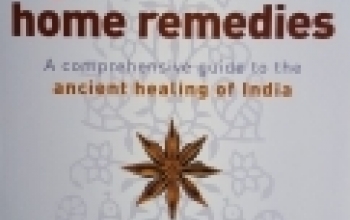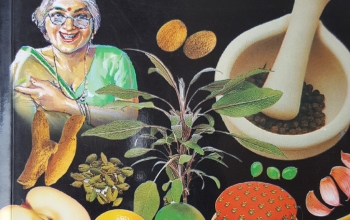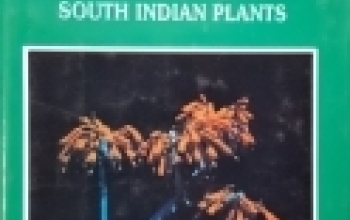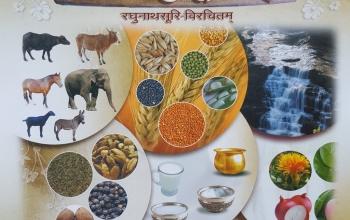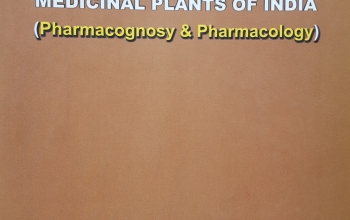Ayurveda is an ancient healing tradition from India that dates back thousands of years and is now becoming increasingly popular in the West.
Actually, Ayurveda is the art of daily living in harmony with the laws of nature. It is an ancient natural wisdom of health and healing, a science of life. The aims and objectives of this science are to maintain the health of a healthy person and to heal the disease of an unhealthy person. Both prevention (maintenance of good health) and healing are carried out by entirely natural means.
According to Ayurveda, health is a perfect state of balance among the body’s three fundamental energies, or “doshas” (vata, pitta, kafha) and an equally vital balance among body, mind and the soul or consciousness.
Ayurveda is a profound science of living that encompasses the whole of life and relates the life of individual to the life of the universe. It is a holistic system of healing in the truest sense. Body, mind and consciousness are in constant interaction and relationship with other people and the environment. In working to create health, Ayurveda takes into consideration these different levels of life and their interconnectedness.
As a science of self-healing, Ayurveda encompasses diet and nutrition, lifestyle, exercise, rest and relaxation, meditation, breathing exercises and medicinal herbs, along with cleansing and rejuvenation programs for healing body, mind and spirit. Numerous adjunct therapies such as sound, colour and aromatherapy may also be employed.
The purpose of this book is to acquaint the reader with these natural methods, so he/she can make the lifestyle choices and learn the self-healing modalities that are right for him/her in order to create, maintain or restore health and balance.
Accordingly, this complete guide (326 pages) offers safe, natural alternatives to conventional medicines and treatments. Packed with practical advice and easy-to-follow instructions, and using strategies tailored to an individual’s unique mind/body type, this guide helps him/her to begin the journey to ultimate health and wellbeing. It also provides information on traditional Ayurvedic remedies which offer relief from a wide range of common ailments and chronic conditions.
Organic Living - Books to read
This Formulary of Ayurvedic Medicines was compiled by Vaidya Mulugu Ramalingayya Garu in Telugu. Later, in the year 1953, it was translated into English by his son Ayurvedacharya Dr. M. Vishveshwara Shastri, HPIM and published by IMPCOPS. It has been published in English, Telugu and Tamil by IMPCOPS.
In the first four editions the names of the drugs were given in Sanskrit. In the 5th edition, the names of the drugs have been translated into common English terms. Wherever the English terms are not available, the Latin botanical names have been used.
The object is, that the Practitioners who are not familiar with the Ayurvedic terminology and yet, interested to know the prepared medicines of Ayurveda and their method of preparation may understand better from this book.
In the first 480 pages, 365 Ayurvedic medicines are presented. In the following pages (481 to 687), a Glossary, giving the equivalents in South Indian Languages and Hindi, is provided. (Total 475 items, starting from “ABHRAKA” and ending with “YAVAKSARA: CARBONATE OF POTASH”). The glossary explains briefly, the parts used, so as to familiarize the reader with the drugs.
The object is that, these common Ayurvedic medicines widely used by the practitioners of Ayurveda, may also be known to the Practitioners of other systems of medicines. Therefore, the formulae, the methods of preparation, the dosage and the indications of these preparations are also given.
The Pharmacopoeia of Siddha medicines was first published by IMPCOPS IN 1956. It was prepared by Dr. V. Narayanaswami HPIM and Dr. C.S. Uthamaroyan HPIM in English. Tamil and Telugu translations were later published by IMPCOPS. In all these editions the drug names and indications were given in Tamil.
In the forth edition, these terms are translated and given in simple English. The names of drugs unique to the system are given in Tamil, but these are just a few.
The object is that the practitioners who are not familiar with Siddha terminology and yet interested to know the medicines of Siddha system and their preparation, may understand better from this book. It is with this view that even the indications of the medicines in diseases are given in English.
The first 310 pages of the book present the names and details of 226 Siddha medicines. In the following 200 pages, a glossary giving the equivalents in South Indian Languages, Sanskrit and also Hindi is provided. (Total 508 items are listed, starting from “ABRUS” and ending with ‘ZIZYPHUS OENOPLIA”) The Publishers” object is that these common Siddha medicines widely used by the Practitioners of Siddha system may also be known to the Practitioners of other Systems of medicines.
The glossary and the other appendices should first be studied to gain familiarity with the drugs and processes and then the general introductions to each section may be gone through by the readers for making the most out of this book.
For centuries, grand mother was the Doctor in every house. For any ailment, she had a remedy. And, those remedies were curing many health disorders quickly.
When I was in 8th standard, one night I had terrible stomach pain. Then, a grand mother by name Kalyaniyamma, who was our neighbour, came with dry fruits of soap nut. After grinding the fruits in water, she smeared the paste to the dip in the centre of the belly (Kibbotte in Kannada). Within 15 minuted the pain vanished!
They are such simple remedies that any one with the primary knowledge of these remedies can practice them confidently. The ingredients for preparation of the home-medicines are mostly available in the kitchen itself. So, by simply knowing the proper use of these remedies, we can keep ourselves healthy, even in today’s fast life. They are effective because their roots lie in Ayurveda.
This book presents home-remedies for hundreds of health disorders, which bother us in day-to-day life. It also gives properties of very popular herbs which are part of every kitchen.
First 13 chapters of the book, listed below, provide disorder-wise information:
Diseases and Juicing
Head Disorders
Stomach Disorders
Chest Problems
Heart & Blood Pressure Problems
Kidney & Bladder Disorders
Body Burn & Scars
Deficiency Diseases
Arms & Legs Disorders
Mouth/ Tooth/ Face Disorders
Ear/ Nose/ Throat/ Eye Disorders
Common Ailments of Children & Women
Misc. DisordersFurther, “Common Home Remedies” using following items available in the kitchen have been presented:
Turmeric, Asafoetida (Heeng), Carom (Ajwain), Coriander (Dhania), Cumin Seeds (Jeera), Cloves (Lavang), Salt, Cinnamon (Dalchini), Fenugreek (Methi), Lemon, Margosa (Neem), Sacred Fig (Peepal), Basil (Tulsi)In the last chapter, “Herbal Tips” for many disorders, including Bleeding Gums, Toothache, Constipation, Head ache, Body ache, Cuts/Wounds, Insect Bite have been given.
Medicinal plants are not only a major resource base for the traditional medicine & herbal industry but also provide livelihood and health security to a large segment of Indian population.
Information drawn from the published records on codified Indian Systems of Medicine (Ayurveda, Siddha, Unani, Swarigpa and Homoeopathy) and ethno-medicinal practices in the country reveals that about 6,000 plants species are used in the Indian health care traditions. It is also a matter of record that more than 9,000 registered manufacturing units are engaged in making herbal based formulations the country.
In this scenario it becomes important to know the number of medicinal plant species being consumed by the herbal manufacturing units, the quantum of such consumption and the gaps in the demand and supply of the medicinal plants.
Therefore, a study was sponsored by National Medicinal Plants board (NMPB), through the Foundation for Revitalisation of Local Health Traditions (FRLHT), Bengaluru with the objective of finding answers to issues related to demand and supply of medicinal plants in the country. This boo presents report of the study.
As the book was published in the year 2008, the data given in the book needs updation. However, the data helps us to understand the trends in demand and supply of important medicinal plants in India.
About 1178 species of medicinal plants are estimated to be in trade of which 242 species have annual consumption levels in excess of 100 metric tons/year. The domestic demand of medicinal plants has been estimated 1,95,000 MT for the year of 2014-2015 and export demand of medicinal plants has been estimated 1,34,500 MT during 2014-2015. Total consumption of herbal raw drug in the country for the year 2014-15 has been estimated at 5,12,000 MT with corresponding trade value of ₹ 5,500 Crore. The major increase has been recorded in export value which has increased from ₹ 345.80 Crore in 2005-06 to ₹ 3211 Crore in 2014-15, registering a nine fold increase in during last decade.
In recent years cultivation of medicinal plants has started gaining momentum, still a significant part of our requirements continue to be met from wild sources. So, urgent programmes to increase the cultivation of medicinal plants should be implemented and in this regard the recommendations of the book provide useful directions.
Every Sunday morning, for over 15 years, Sanjeev Kapoor hosted the popular cookery show, “Khana Khajana”, in the TV channel. He has shared hundreds of great recipes and shown millions of viewers how to prepare that perfect dish.
“Tasty Eating for Healthy Living” contains following 5 volumes:
1.Soups, Snacks and Starters
2.Main Course Veg
3.Main Course Non-Veg
4.Cereals & Breads, Dals & Kadhis, Pickles & Chutneys
5.Salads, Beverages & DessertsIn these volumes, Sanjeev Kapoor has put together a collection of his best-loved recipes. This book is for all - whether you are an accomplished cook, a lover of good food or a novice taking your first steps in cooking.
There is something from every Indian regional cuisine including Gujarati, Punjabi, Bengali and South Indian. And a range of Mexican, West Asian, East Asian and Continental dishes!
The second volume titled “Main Course Veg” presents the ingredients and method of preparation of 43 dishes along with the benefits. Every dish is nutritious, as also delicious and easy to cook. The volume describes the many mouthwatering options for a vegetarian main course available to the health-conscious eater. The recipes are from across the length and breadth of the country including Capsicum Kayras from the West coast, Chorchori from the East, Baghare Baingan from the South and Achaari Gobhi from the North.
Today’s fast-paced lifestyle leaves most people with little time to sit down to a meal leave alone think about what they eat. Meals are gobbled on the go, with no regard to their nutritive content.
Keeping that in view, Master Chef Sanjeev Kapoor shares the story of how he transformed his life by following a healthy diet-and-exercise regimen. Not only does the collection have scores of recipes for healthy eating, it also tells us how to keep fit through, simple exercises and small changes to our lifestyle.
It also has a section on “Helathy Diet for every stage in life”: Infancy, Weaning, Childhood, School-going age, Teenage, Adulthood, Pregnancy and Lactation, Menopause and Old age.
Studies conducted at the University of Kansas show the benefit of spending more time in nature. Testing the theory that “nature has specific restorative effects on the prefrontal cortex” - the part of the brain responsible for creativity and planning - the researchers gave a standardised problem - solving test to backpackers aged 18 to 60, before and after a four-day sojourn into the wilderness. Campers returning scored 50 percent higher.
Why? “Nature is a place where our mind can rest, relax and let down those threat responses,” says Ruth Ann Atchley, lead investigator. When we spend time in nature, Atchley, proposes, “we have resources left over - to be creative, to be imaginative, to problem-solve - that allow us to be better, happier people who engage in a more productive way with others.”
This richly illustrated volume is an excellent guide to the amazing views and vistas of North America’s natural world. It is designed to invite people, young and old, to step with greater pleasure into the out-of-doors. The purpose of the book is to educate and entertain.
The book presents five of the great realms of nature: World of wildflowers, trees and shrubs, rocks and minerals, the weather and the night sky. In each part, the book offers breath-taking images, identifying features and brief descriptions of each of the 781 species and phenomena selected by the experts in these fields of natural history.
Thus, the guide is a starting point from which every nature enthusiast will proceed to fuller, longer and more detailed topic-specific field guides.
We should remember that the more high-tech we become, the more nature we need and use such guides throughout our life to learn more about the wonders of nature and draw energy and inspiration from nature.
Survival of human race on earth depends entirely on plants. Naturally, from ancient times, man became curious about the life and uses of plants which led to the study of plants in various ways. In the last five decades, this study has developed into several important fields like bio-diversity, Food and Agriculture, Ecology, Environment and Health, Tissue Culture, Genetic Engineering, Hydroponics, to name a few.
It is inevitable for us to be familiar with the plants surrounding us and the plants which are essential for our survival. However, plants are recognised by us, to begin with, in our own vernacular or folk name. In a country like India, where diversity is vast, several communities live in different parts of the country. The plants surrounding these diverse communities and used by them are recognised in their own language by a vernacular or folk name.
Thus, a plant with one botanical name is known by many vernacular or folk names. The value of recognising a plant with the help of a vernacular or folk name becomes clear when it is botanically identified and its usefulness to society is established.
Unfortunately, limited literature exists in which all such vernacular or folk names are available in one document. Hence, it is necessary to have Compendiums of Botanical and Vernacular names of plants. To achieve this objective, this book by Dr. Magadi R. Gurudev from Department of Botany, Visveswarapura College of Science, Bangalore is a valuable contribution.
This compendium provides 2,222 plant names with English (2,748), Hindi (3,466), Kannada (7,472), Konkani (511), Malayalam (2,394), Marati (2,400), Sanskrit (8,866), Tamil (5,863), Telugu (4,666) and Tulu (587) names. Thus, it is useful for both, a layman and a scientist.
Bhojanakutuhalam is an encyclopaedic book on various aspects of food from the perspective of Ayurveda, with English translation of the original Sanskrit text. It synthesises the 2,000-year old Ayurveda tradition with Food science.
The title of the great book literally means “curiosity about food”. Accordingly, the book provides exhaustive information about the different natural food elements and also the food products that are prepared by processing these elements. It also gives a detailed exposition of various aspects associated with consumption of food, water etc.
Even though Raghunatha Suri, the author, belongs to 17th century, he has compiled in a systematic manner all the information available about food, right from the ancient texts to the medieval texts that were available upto his time. Thus, it gives extensive information on the history of food science and technology of India for a period of 2,000 years.
The book also mentions many interesting aspects like proper usage of cosmetics, clothing etc. Therefore, it is a very prominent text from the point of view of the study of Indian culture and civilisation also. This work is most relevant today as it sheds ample light on our much degenerated food habits and stresses on the corrective measures one has to take to maintain proper physical and mental health.
It contains 40 colour pages in the beginning (with colour photos and text for easy understanding) and 20 colour pages at the end (with photos of 135 plant parts for identification). Postal address of the publisher: Institute of Ayurveda and Integrative Medicine (I-AIM), Foundation for Revitalisation of Local Health Traditions (FRLHT), 74/2, Jarakabande Kaval, Post Attur, Via Yelahanka, Bangalore 560064
Medicinal plants research in India has gained prominence during the last three decades. At the same period, the number of journals publishing information on medicinal plants has increased all over the world. As a result, it is becoming increasingly difficult for the research workers to keep track of the work carried out. Important reason for this is the inaccessibility of the journals; Consequently, many research workers are repeating the research carried out earlier.
Keeping this in view, this bibliography attempts to provide updated information till the year 2007 on work carried out in the fields of Pharmacognosy and Pharmacology of Medicinal Plants of India including some exotics/ introduced/ naturalised species.
The Bibliography contains information about 1521 species, distributed over 851 genera. The names of the plants are arranged alphabetically. For each plant, the correct name along with author citation is given in bold letters, followed by important synonyms, if any, in parenthesis. This is followed by author’s name, arranged alphabetically, year, full title of paper as mentioned in journal, name of journal with volume, issue and page numbers.
It is a useful reference book, particularly for those engaged in research in Ayurveda and medicinal plants of India. Index of Botanical names of the plants is given at the end.

